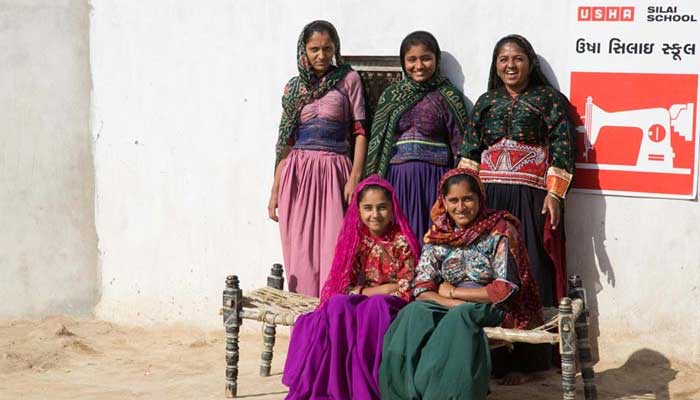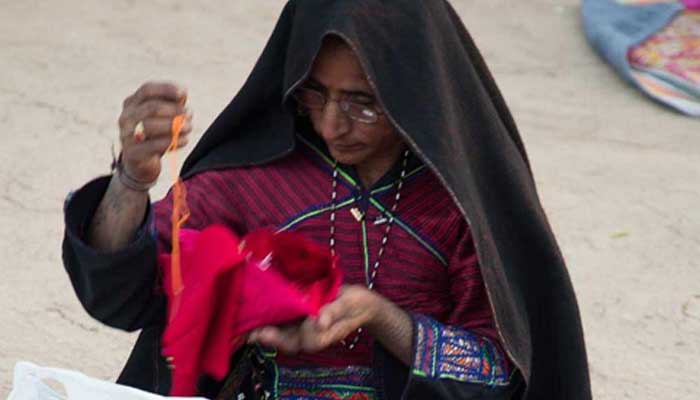- Home/
- From Mud Houses To Ritzy Runways, Silai School Women's New Journey
From Mud Houses To Ritzy Runways, Silai School Women's New Journey

Partnering up with various NGOs across the country, the initiative through its silai schools trains women across India to develop their stitching skills. Once trained the women use their skills to earn a livelihood and become financially independent. Most women part of this Kushalta ke Kadam initiative, are now entrepreneurs in their own right. They are not just earning a living by using their skill but are passing on their new learnings to other women in their community. So the success of the initiative is not just that few women learn stitching and use it to make money. The success lies in what these women do after they walk out of the silai school. Apart from setting up their own tailoring units, they set up schools of their own to train more women and create similar opportunities for others in their community.
Call it empathy or just a desire to change the circumstances and not be held hostage, but these women have taken Kushalta ke Kadam and decided to be the beacon for others to follow. And because of that they have earned equality and respect not just within their homes but also in the world outside.
In order to take the campaign to a new height, Kushalta Ke Kadam in collaboration with IMG Reliance decided to come up with a fashion brand that these silai school pass outs will produce in partnership with designers and experts.
The aim is to provide a larger stage to these talented rural women. A stage where these women under expert guidance will step into the bigger world of business. The genesis of the idea was sown in July 2017. The country was first divided into four regions - Rajasthan, Bengal, Gujarat and Puducherry and an assessment process was carried out to select USHA Silai School women, from these locations, who matched a pre-decided criteria. In order to assist women to produce high-quality garments that echoed the ethos of the four regions, one fashion designer was assigned to each region.This year, we have fashion designers and experts with whom we are trying to identify the latent potential of the women who have already received training in sewing, said Dr. Priya Somaya, the Executive Director of USHA Social Services.
Assigned to Gujarat, Mr Dave took inspiration from the black sewing machine to conceptualise his clothing line. Working simply on human energy and not electricity, the black foot sewing machine stands as the most sustainable way to make garments in his opinion. Thus, his region would most likely highlight inspiration from the basic black color to minute details of the equipment.What excited me the most was the opportunity to work at the grass root level and assisting in refining the raw skills of these women, said Soham Dave, designer and owner of a fashion brand.
'Amrich' by Amit Vijaya and Richard Pandav , the label assigned to Rajasthan, took another approach to embrace the fashion culture of their region.
Hesitant at first about the skill levels of these women, the duo were surprised to see the enthusiasm and desire to learnWe were amazed to know that the USHA Silai School programme has been going on for so many years and has helped many women earn their livelihood from it, said Mr Vijaya.
.
Their final collection has drawn inspiration from the traditional poshak of Jaipur and deconstruct the look to present a collection of chic secedes.For us, it was really exciting to hear about the underground culture of training women in tailoring. So, we said 'yes' to the opportunity of working with them, he added.
Being assigned to West Bengal, Mr Sarkar's final collection might be an amalgamation of Indian and western silhouettes. As his collection primarily uses a lot of fabric base like khadi, jamdani, and motif weave while incorporating floral motif prints, embroidery and texture to the attires, it would be a nice surprise to see what his group brings to the runway.We divided our group in three sections. First of those who are skilled in stitching and can do intricate work, second of those who are fast in stitching and can do lengthy work and finally third is the hand embroidery group, said Sayantan Sarkar, designer and owner of the Sayantan Sarkar Design Studio in Kolkata.
Lastly a designer known for his personal zeitgeist, Sreejith Jeevan, was assigned to Puducherry region to help conceptualise a collection that will be true to the French influenced city.
"We are looking at all types of sewing techniques," he said. "This process is very exciting. All the women are from different villages and since they are already entrepreneurs they have a creative sense of their own which I think is vital to the complete process."
Being generally inspired by the windows which are highly prevalent in the Puducherry architecture, his region's collection should most likely see the use of box pleats and pin tucks as a metaphor to the windowpanes and colorful patches to signify the colorful window panels.
The women are being provided with the required resources to design and produce a fashion line and to be showcased at the major trend-setting event in Mumbai.
"For the last 6 seasons of Lakme Fashion Week, we have been dedicating one day to showcase a sustainable fashion," said Jaspreet Chandok, Vice President and Head of Fashion IMG Reliance.
As the USHA Silai School women become the flag bearers of this design journey, the wait is now for the final show where these women will get the chance to showcase not just their skills and hardwork but tell their stories through the garments they design.
Also Read: Moving Towards A Fearless Future, Soni From Nithari Village Takes Charge Of Her Life
also read
Threads Of Courage: Usha Silai School's Kushalta Ke Kadam Weaves Dreams Into Reality
Team NDTVStitching New Beginnings: How Usha Silai Schools Transformed Three Women's Lives
Written by Team NDTVUSHA x NDTV: From Uttar Pradesh To Bihar, Corporate Partnerships Drive Financial Freedom For Rural Women
Team NDTV
Related Stories
More- Team NDTV | Wednesday January 07, 2026
From Madhya Pradesh's stigma to Bihar's child marriages, Usha Silai School's NDTV-backed Kushalta Ke Kadam empowers women like Kalpana and Shabnam to stitch dignity and self-reliance
- Written by Team NDTV | Friday January 02, 2026
Usha Silai Schools give second chances to women like Srinagar's Marifat, who rebuilt after widowhood; Madhya Pradesh's Jyoti, escaping abuse to run her own center; and Rajasthan's Vimla, rising from child marriage to tailor and teacher. Through nine-day training, they gain sewing skills, confidence, and income proving one stitch mends lives and inspires communities.
- Team NDTV | Friday December 26, 2025
A new wave of corporate-community partnerships is equipping rural women with skills, income and confidence
- Written by Team NDTV | Friday December 12, 2025
USHAs Silai School Programme empowers women across India by turning sewing into independence. Women become trainers and leaders, transforming their lives and communities through skills, confidence, and income
Adopt a Silai School
About the Initiative

Kushalta Ke Kadam, an initiative by USHA Silai School and NDTV has entered its eighth season. The aim is to empower more women across rural India by teaching them sewing skills and helping them open new doors of opportunities for themselves. The initiative encourages rural women to become financially independent and entrepreneurs by taking up sewing and training others in their respective communities.
Since 2011, the USHA Silai School initiative has trained more than 12 lakh rural women through over 33,000 Silai schools, spanning over 20,751 villages across India.
The women earn Rs. 4,000 – 5,000 per month on an average, with the highest recorded monthly earning being Rs. 84,000 in a month. This earning works as a catalyst towards building their self-confidence, reducing gender inequities, and raising their stature within their families and in society at large.
In Pics

Rebari girls grow up learning traditional embroidery, which along with their new found sewing skills developed at Usha Silai Schools, is helping them earn a living.

Usha Silai School has empowered many rural women to support their family and send their children to school.

The Usha Silai School, established in a small nondescript village that goes by the name of Kottai, is helping empower people from varied communities.

The all-inclusive Usha Silai School Programme covers the entire nation from hamlets tucked between hills to villages cast by the sea.

Vegetables farmers from the Mizoram hills earn very little given the topography of the area. Usha Silai Schools have played an important part in this region by skilling women to financially contribute towards their households.

Usha Silai School learner Lucy has trained seven other women in her community, helping them to become financially independent.

Women like Kaviben from the nomadic Rebari community are finally laying down their roots as they begin to gain financial independence and thereby stability through Usha Silai School.

Usha Silai School, located in the Gujarat's Bhuj village, is enabling rural women to earn as much as Rs. 2,500-4,000 each month.

Usha Silai School, in association with a Gujarat based NGO called Kala Raksha, is trying to bring about a Silai revolution in Bhuj.

Besides training other women from their community, many Usha Silai School learners have become entrepreneurs in their own right.

With sewing becoming easily accessible and lucrative, the silai schools are also helping revive traditional motifs and designs.






